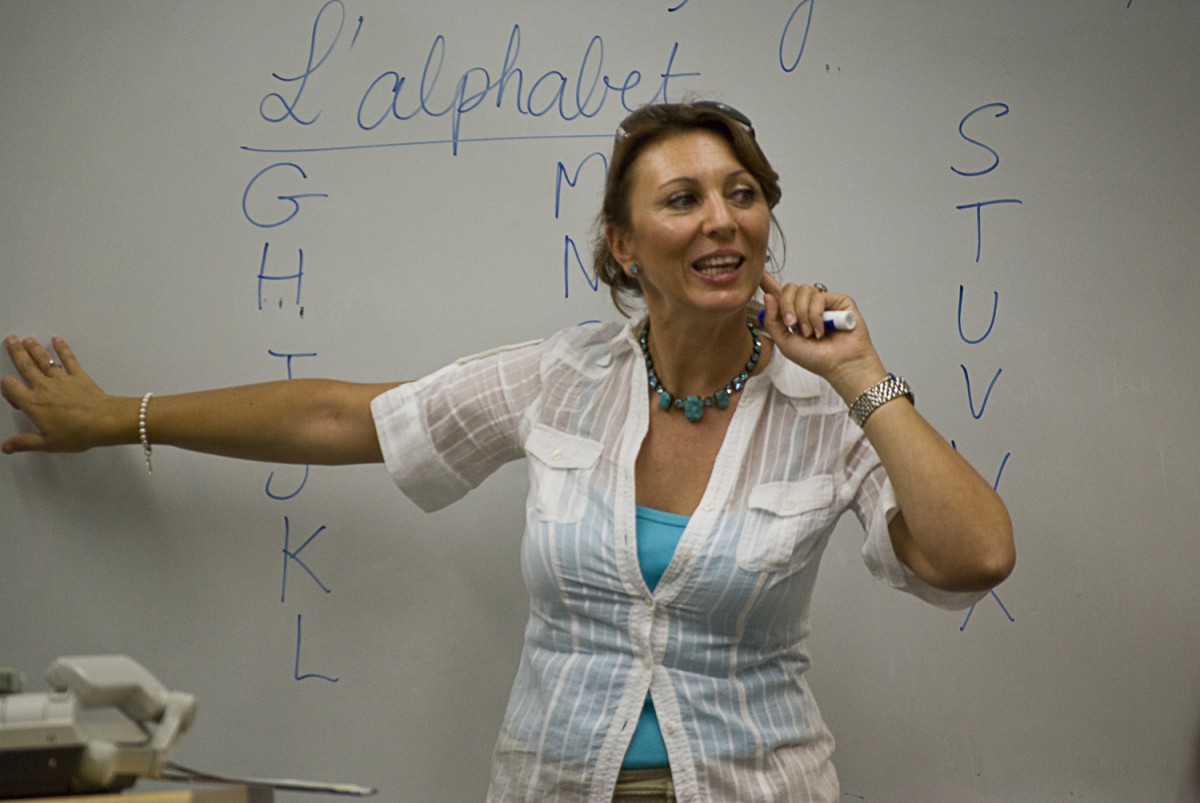Adjuncts taught nearly one-third of all course sections at USFSP during the fall 2010 semester—the result of austerity measures, a decades-long shift in employment and an increased demand for college degrees.
They are classified as part-time, non-contractual employees; have no access to the state health care plan and are paid significantly less than their full-time counterparts. However, their numbers are growing as the university seeks to protect itself from future budget cuts and the uncertain future of financial aid.
“I work seven days a week,” said Margarita Altuna, an adjunct who teaches eight Spanish language courses across three different colleges. At USFSP she teaches two of the four-credit hour classes online, two one-credit labs and a section of Spanish III in person. Her online sections are almost filled to the 75-student capacity.
“Nobody wants to do online classes because it’s challenging for us,” said Sophie Champigny, an adjunct who teaches 20 credit hours of French language at USFSP.
“The number of students is outrageously high,” she said. “When you have 60 students per class, that’s crazy, you have to be available all the time … All we do is work.”
Despite the workload, both said they are fortunate.
When Altuna moved from Maryland to Florida, “it was kind of hard to find a job in my field,” she said. “I really love to teach and USF has given me an opportunity. The school is growing and I’m looking to be a part of that growing.”
“I was lucky because I was given so many classes,” said Champigny, who also taught 15 courses during the 2010-2011 academic year and organized a study abroad program to France over the summer, “but you never know” how many you will be assigned next semester. “There is no security.”
Pay for adjuncts at USFSP is determined by the colleges, but the typical pay rate for teaching lower division courses within the College of Arts and Sciences is $700 per credit hour.
The University of Tampa and St. Petersburg College offer similar rates, but St. Petersburg College pays a slight premium for adjuncts with a doctoral degree.
Adjunct pay is driven by market forces, said Human Resources Director Sandi Conway. There is “a fairly high unemployment rate and we’re still getting ample pools of qualified people.”
“It’s better to hire a temp than a regular and then have to lay someone off,” Conway said. Despite budget cuts, the university has not had to lay off any employees, she said.
From fall 2007 to fall 2010, the undergraduate head count jumped by 15 percent and those students were more degree-focused, leading to a 21 percent increase of undergraduate credit hours taken. As a result, the university hired more adjuncts and full-time faculty members took on heavier teaching loads.
Average class sizes have also increased from 30 in lower division courses and 25 in upper to 32 in both.
“We’re leaning more on teaching and less on research,” said Assistant Director of Academic Affairs David Everingham. “We’re forced to make do with what we have.”
The recent tuition increase is offsetting cutbacks, Conway said, but the university is taking a conservative approach to hiring and associated long-term expenses. “Management has made sure the money is there in case of another budget cut.”
The university is still hiring tenure-track and non-tenured faculty, she said, but if an employee leaves, the university analyzes whether those duties can be distributed among the remaining staff.
While the number of tenured professors increased between 2007 and 2010, the number of tenure-track professors decreased from 45 to 25.
“USF (and USFSP) are part of a national trend. Tenured and tenure-track faculty lines have been disappearing for decades now, replaced by non-tenured instructors and lecturers, and by adjuncts that are essentially piecework workers,” said Gregory McColm, secretary of the USF chapter of the United Faculty of Florida.
“Although USF has an official policy that departments will not hire adjuncts for purely financial reasons, the fiscal imperative is compelling, especially when times are tight,” said McColm, who is an associate professor of mathematics and statistics at USF Tampa.
During the fall 2007 semester, 72 employees were classified as adjunct faculty. In fall 2010, there were 102. In the same time period the number of full-time faculty decreased by 22.
Adjuncts have traditionally been used as a hedge against the uncertainties of freshmen enrollment. If enrollment spiked, additional adjuncts could be hired to meet the demand in lower division courses. If enrollment was low, the university did not find itself in a position to find work for a contractually protected, full-time employee.
“Many departments have their major courses and graduate courses in mind when they hire permanent staff,” McColm said. “Lower division and remedial courses may require a lot of pedagogical training to teach well, but the resources for that are limited anyway, so it will be the lower division and remedial courses that get lots of adjuncts.”
“There has been a lot of moralizing about the use of adjuncts, but the solution is to allocate a lot more money to instruction. Since no one wants to pay higher taxes or tuition, the problem remains,” McColm said.
The university equates each credit hour taught by an adjunct as 6 percent of a full-time equivalency, a measurement of labor contribution. As a result, teaching 17 credit hours equals slightly more than 1 full-time equivalency, 16 slightly less.
Adjuncts are usually limited to teaching only four sections in a semester, but each beginning language class is worth four credits and requires a one-credit lab. In some cases, professors are teaching full-time loads with part-time benefits.
“Everyone needs Spanish teachers, but no one wants to give benefits,” Altuna said.
Altuna earned a master’s degree in Latin American literature from the University of Maryland, where, as a Ph.D. candidate, she worked as a teaching assistant. Part-time instructors at the University of Maryland are given unsubsidized access to the state health care plan.
“The main benefit we should get is health insurance,” she said. “So many adjuncts have worked years and are not getting the minimum of health insurance. That’s completely wrong.”



